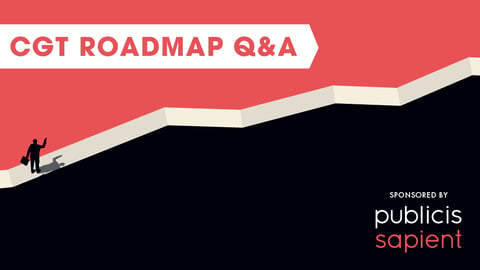Win More Loyal Customers with Consumer Insights and CPG Analytics
Modern-day marketers are under increased pressure to deliver growth opportunities for businesses while orchestrating seamless omnichannel experiences for today’s connected customers. This is particularly true for fast-moving direct customer-facing industries such as CPG, retail, financial services, healthcare and insurance.
In these sectors, creating a personalized customer experience(CX) is no more a differentiator, it’s a necessity.
Customers today are increasingly valuing personalized experiences and they expect to be treated as an individual rather than a part of a broader persona. In fact, 90% of customers find irrelevant marketing messages annoying and 57% affirm that they would switch to a competitor if they provide a better experience.
This increase in customer preference for meaningful experience and engagement across channels means that organizations today need to rally around with a single-minded focus on grabbing mindshare and long-term loyalty. And this can only be achieved through strategic customer engagement initiatives that can drive brand affinity and loyalty throughout the entire customer lifecycle.
The good news is that companies can interpret and act upon the wealth of data they have with the help of customer data analysis. Today, consumers are constantly researching, shopping, inquiring, or otherwise interacting with brands online, creating humongous amounts of data every second.
Companies have the opportunity to capitalize on this massive repository of data to understand customer journeys and deliver personalized experiences that appeal to the unique demand of the consumers.
By better understanding factors such as economic condition, product preferences, purchase behaviors, and consumption patterns, companies can come up with a CX-focused data strategy that is understood and embraced by the entire organization. This way they'll have a better chance at optimizing every customer touchpoint and win their loyalty while capitalizing on opportunities to collate, analyze, and turn data into actionable insights.
Driving Meaningful Customer Engagements with Customer Analytics
Eighty-six percent of consumers are willing to pay a premium for a better customer experience. It is challenging, however, to match the online and offline customer experience without effective customer churn analysis and customer data analysis. As the most effective means of tracking KPIs such as customer retention rates, churn rates, customer loyalty, and so forth, CPG analytics solutions are therefore the best means to improve the channel mix to lower cost and increase profits for organizations.
The impact of CPG analytics on a company’s long-term objective to drive customer loyalty can be broadly divided into two key pillars:
1. Hyper-Personalization of Every Customer Touchpoint
With a robust CPG analytics framework, companies can anonymize master profiles of every customer and gain complete visibility of their buying journey. Over and above, analytics makes targeted messaging easier across touchpoints, which not only enhances the chances of conversions, but also makes it easier for brands to retain loyal customers with personalized offers like instant discounts, flash coupons, and so on.
2. Product Personalization
A strong data engineering and analytics core can help companies closely understand customer preferences, triggers, and barrier points. When new product and service offerings are designed on the basis of unique customer needs, they would naturally sell faster.
Now more than ever, marketing decision-makers have the opportunity to spearhead the effort of omnichannel personalization with customer insights, given the easy availability of enterprise data. This step forward, however, needs to be underpinned by a robust data foundation over which companies can seamlessly create and deliver exceptional customer experiences.
Over the years, while the majority of companies have developed a data and analytics framework, the internal functions often operate in silos with distributed data architectures. This creates a barrier in concerted decision making.
Building capabilities in data engineering practices and creating a long-term analytics roadmap can help companies go a long way in helping companies unify data generated from omnichannel interaction and processes like supply chain marketing and finance.
Creating a Robust Data Foundation
Over the next five years, the shift in paradigm caused by the pandemic will fuel global data creation to reach more than 180 zettabytes. While it is crucial to provide customized responses and services to increase sales to new and existing customers, harnessing such enormous volumes of customer intelligence data is an insurmountable challenge for data analysts.
Simply collecting huge volumes of data about customers, including their profiles, preferences for channels and products, sentiments expressed on social media, interactions, and more is not enough. Customer data needs to be thoroughly categorized and transformed into insights, and customer data platforms (CDPs) are one of the most powerful enablers of this process.
Omnichannel personalization, like any other process transformation initiative, needs a single source of information that can guide and influence marketing activity. In order to get there, companies will need CDPs that can help consolidate and organize the collated data to provide a complete picture of the customer, their preferences, and the overall purchase journey.
[Related: Consumer Data and the DTC Transformation]
By leveraging a CDP as a central analytics repository, companies can access reliable customer data and mitigate data silos that often jeopardize marketing personalization campaigns. While creating this central data foundation, companies can embed a range of tools within the platform that can help drive data analysis pertaining to specific requirements, such as customer segmentation, marketing spend analysis, pricing analysis, customer churn analysis, propensity modeling, and so on.
Such platforms can also help companies create accurate customer profiles on the basis of which hyper-targeted experiences can be delivered. These experiences can be tweaked on the basis of not just individual preferences and behaviors, but also previous interactions with the brand.
A robust customer data analytics solution can help data analysts become proficient at predicting what customers want and how they would behave while interacting with organizations. With customized strategies that can drive repeat purchases, companies not only increase the chances of customer retention, but also enhance marketing ROI.
Conclusion
An average customer today has access to more than ten channels through which they can interact and engage with a brand. There’s an expectation however, that with every new engagement a company will also nurture a continuous awareness of a customer’s journey with the brand. The only way companies can deliver consistent omnichannel communications is by centralizing all interactions within a common customer analytics platform that is accessible to all the company stakeholders.
The key to delivering consistent customer experiences across channels lies in how well a company understands its customers. And customer analytics can help companies achieve just that.
Sudeep Rao is a senior pre-sales manager at Sigmoid. He has a decade of experience in providing data-driven solutions for companies across adtech, retail and CPG in their digital transformation journey.






